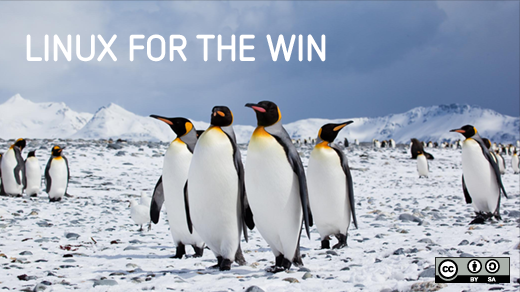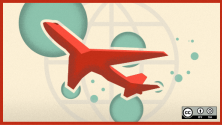Jim Zemlin, executive director of the Linux Foundation, kicked off the LinuxCon North America 2015 with a keynote and the video, Distributed genius: Thousands of minds solving the world's hardest problems.
Linux Foundation projects
Zemlin says that an impressive 64 million lines of code has been added to projects hosted by the Linux Foundation since they became collaborative projects. That's thousands of unique contributors creating billions of dollars of value, he says, and he isn't even including the Linux kernel in that code count.
He then talked about a few of the projects the Linux Foundation helps fund. "We're funding the timekeepers of the Internet. Literally the people who keep the clocks on the Internet," he says. Other projects include The Gnome Foundation, the Freedom Software Foundation, UEFI, the Software Freedom Law Center, and Code.org. Zemlin then announced two new projects, Kinetic Open Storage and the IO Visor Project, before inviting IBM speakers on stage.
After Angel Diaz, vice president of Cloud Technology and Architecture at IBM, and Ross Mauri, general manager of z Systems at IBM, took the stage to announce LinuxOne Systems, IBM's new Linux mainframes, Zipcar founder Robin Chase took the stage.
Peer collaboration could save the planet
Robin's keynote talk was incredibly inspiring, and Sean Michael Kerner quickly posted a summary on Datamation: Open source peer collaboration could save the planet. She used specific examples of customers as co-creators, and talked about a "peers" business model in which people collaborate through platforms to deliver excess capacity. Blablacar ride sharing, for example, transports 4 million people every month by allowing a driver with empty seats to give rides to other people. After Robin's talk, I'll definitely be ordering her book, Peers Inc., to learn more.
Docker's future
Finally, Senior Vice President of Engineering at Docker, Marianna Tessel, took the stage and talked about where Docker is headed, followed by a couple of live Docker demos. And then attendees headed off to the regular sessions.
Samsung's Open Source Group
I headed over to see what Samsung is doing with open source. Ibrahim Haddad, vice president of R&D and head of the company's Open Source Lab, talked about Samsung's relationship with open source, which dates back to the early 2000s. More recently, Samsung established the Open Source Group in 2013. Haddad said the group's mission was to earn an open source leadership position by consistently participating and contributing to projects.
Currently, Samsung's technical focus areas are:
- Media (e.g., FFmpeg)
- Standards (e.g., IoT, W3C)
- Virtualization (e.g., KVM, QEMU)
- Web graphics (e.g., Waland, EFL, Cairo)
- Systems (e.g., Linux kernel, Tizen platform)
Their upstream developers:
- Spend 50% of their development time on key open source software components
- Help R&D and product teams on OSS components
- Work on knowledge transfer internally (e.g., technical training on open source components, education on open source development, mentoring junior or non-open-source devs)
- Are visible internally and externally (papers, conferences, community events)
- Work on special projects and new ideas
Is it working? Haddad says that in 2013, Samsung contributed 2,415 changes to the Linux kernel (2% of all changes) and by 2015 that number has grown to 4,290 (4.4.%).
Linux kernel status update
Next I went to Jon Corbet's Kernel Report session, where we got a preview of what Linux kernel 4.2 will look like. He says we're now at the low end of the time it takes to release a new kernel. "I think 63 days is pretty much the standard at this point," he says. The latest kernel release will include deadline scheduling and ext4 encryption and security module stacking, but there's a few things he still worries about. Security is the big one.
The bad news is there have been a lot of high-profile security incidents (e.g., Shellshock), and many companies have been compromised (e.g., Target, Home Depot, Sony). While there is no shortage of motivated attackers, there are only a few people working on the problem kernel-wise. On the almost-bright side, common vulnerabilities and exposure might be in a slow decline, and efforts are underway to reduce effects of a compromise.
Corbet also discussed IoT systems needing to be small—like, really really small—and pointed to the Kernel tinification effort.
Women at LinuxCon
After that session, I headed off to the LinuxCon women's lunch, and the really good news from there is that attendance has doubled since last year. I send a big thanks out to the Linux Foundation and other organizations who are working toward increasing participation by women in open source, including Valerie Aurora from the Ada Initiative, who spoke briefly during the lunch.
After lunch, I headed off to give my talk, which was an expanded version of the one I gave at OSCON Ignite last month:
Check back tomorrow for another update, and see photos from the event on our new Instagram account.
This article is part of our LinuxCon, CloudOpen, and ContainerCon North America 2015 series. LinuxCon North America is an event where "developers, sysadmins, architects and all levels of technical talent gather together under one roof for education, collaboration and problem-solving to further the Linux platform."






Comments are closed.